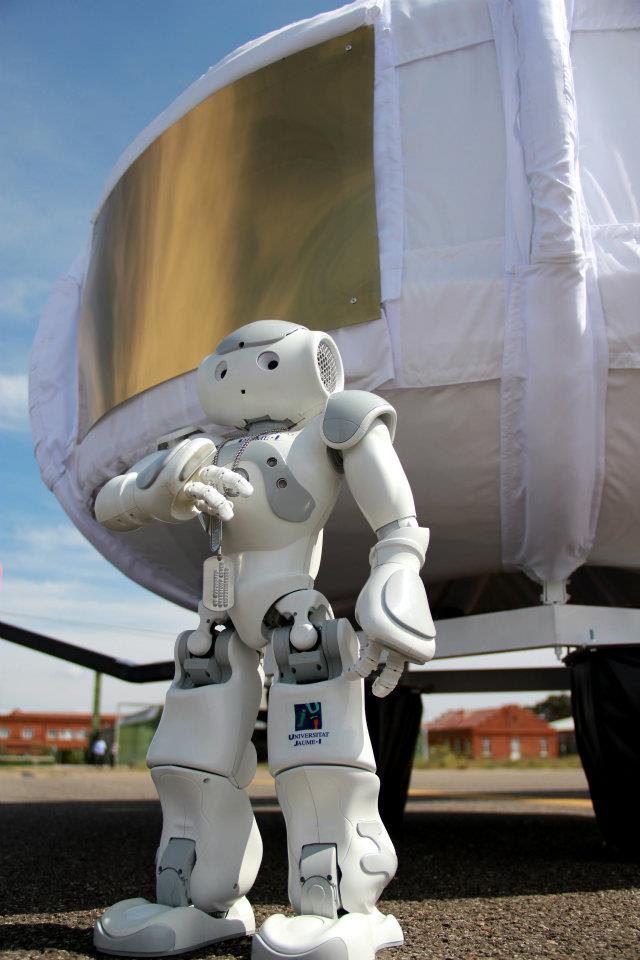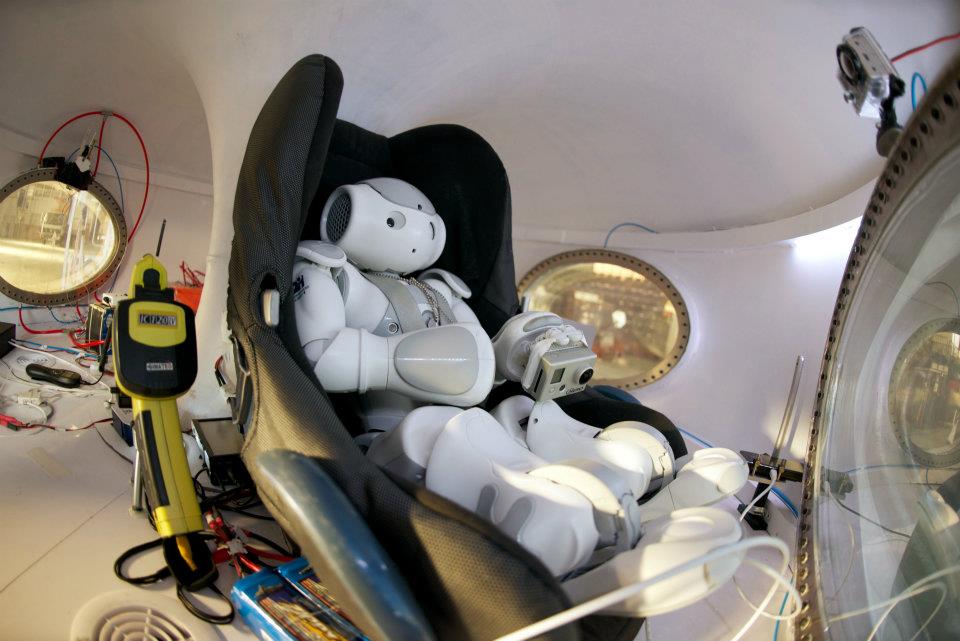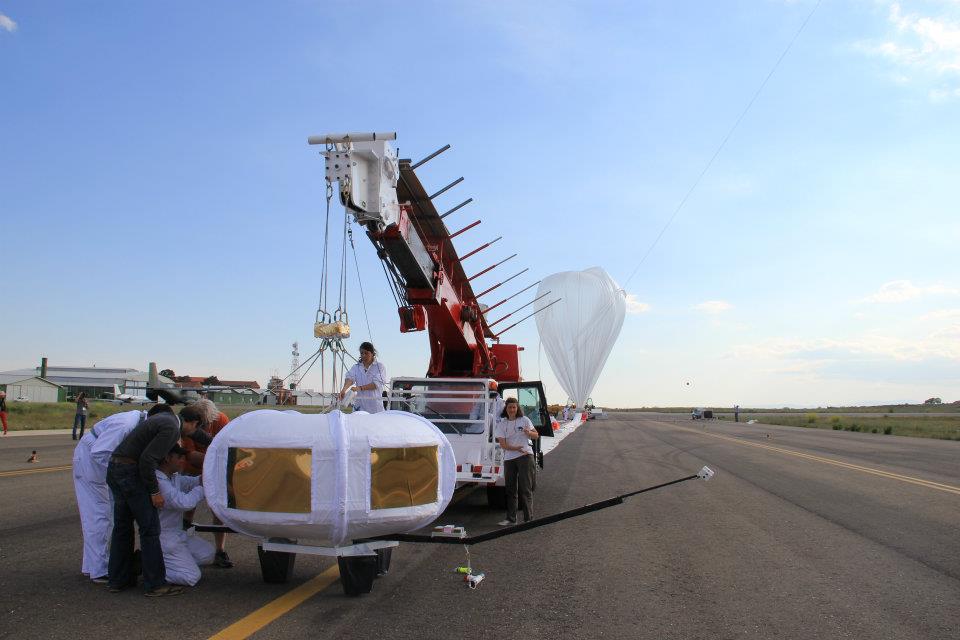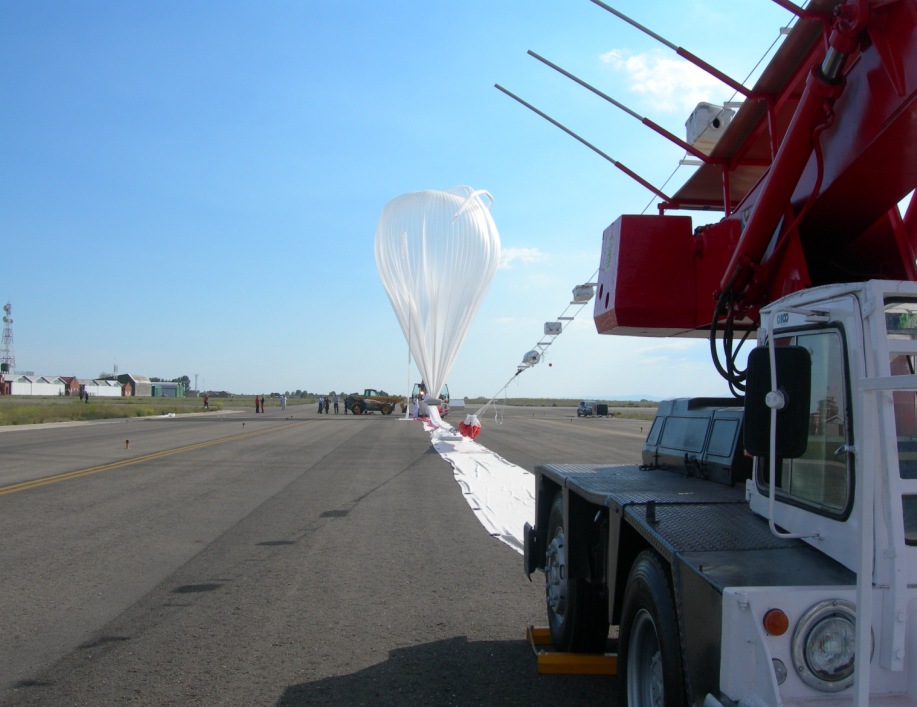Purpose of the flight and payload description
The objective of the flight was to test the behavior, strength and suitability of an inflatable pressurized payload capsule for microbloon, a mockup of the Bloon capsule that the spanish company Zero To Infinity is developing for manned flights in the near future.
The capsule mockup used in this test denominated microbloon 2.0, was a 2 meters diameter pressurized pod designed by zero2infinity as a scaled model of the full bloon pod that will carry 4 passengers and 2 pilots to 36km, providing near space conditions for over 2 hours.
The zero2infinity team designed and built all the launch equipment as well as the pod with panoramic windows. The primary aim of the test was to validate launch procedures and, if everything was nominal and the flight was completed, to perform on-board remote robotic tests and Environmental and Life Support System testing for future inhabited flight scenarios for bloon's scientific, technological and experiential missions. Although unmanned, the pod included a small ergonomic chair on which was allocated an articulated figure of a robot called ''Ironman" which was provided by the Universidad Jaume I from Castelló, Spain. No information was disclosed if the figure had a specific technical or scientific purpose.
Details of the balloon flight
Balloon launched on: 5/29/2012 at 19:42 local
Launch site: Virgen del Camino Airport, León, Spain
Balloon launched by: ISTAR (International Science Technology And Research)
Balloon manufacturer/size/composition: Zero Pressure Balloon model 35SF Zodiac 35.000 m3
End of flight (L for landing time, W for last contact, otherwise termination time): 5/29/2012
Landing site: Aborted flight due to a damaged balloon
The balloon was intended to fly from the airport of Virgen del Camino in León, Spain on May 29th, 2012. Up through the inflation of the 35.000 m3 Zodiac balloon to just before the release of the balloon from the spool, all launch activities were smooth and flight systems were 100% functional.
Just before the release of the balloon from the launch spool, the balloon was loaded by a sudden 11 kt. wind gust that lasted 20+ minutes causing the balloon to "sail" and then spill the air load and then repeat the load and spill several times. Initial inspection of the balloon did not reveal damage so the launch operations continued. The balloon was released with 6 kts of wind behind it so the balloon quickly climbed up and over the launch vehicle. As the balloon took the load a nominal release of the payload was made. At this time it was quickly realized that the balloon had been damaged as the flight system slowly ascended approximately 5 meters above the launch vehicle boom and then began to descend setting the payload on the surface. Winds pushed the balloon a short distance along the grass near the runway and was then stopped by vegetation and quickly recovered.
Once the balloon was returned to the hangar, it was laid out and inspected. A discovery of a gore tear along a seam about a meter above one inflation tube leads to believe that was the point of initial failure. The balloon appears to have been ''stretched" along that seam and then gave out. Additional stretch zones appear in sequence where the balloon was in the launch spool during the wind loading.
External references
- Bloon project Zero to infinity website
- Zero 2 Infinity's Microbloon 2.0 Begins Test Program Zero to Infinity press release
11408If you consider this website interesting or useful, you can help me to keep it up and running with a small donation to cover the operational costs. Just the equivalent of the price of a cup of coffee helps a lot.





